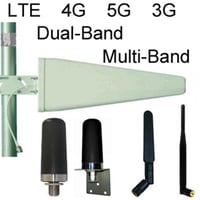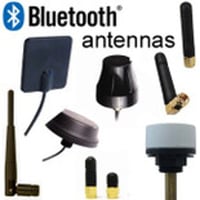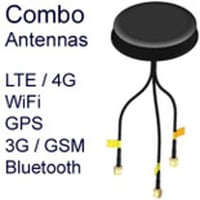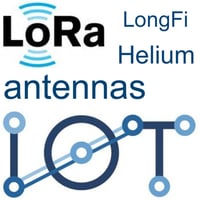Directional 2.4GHz Antennas
Directional 2400MHz Antennas
The most popular 2400MHz directional antenna types for outdoor weatherproof are Yagi, Parabolic Grid or Dish (Parabolic is best for long-range Point-to-Point), and Sectoral. Panel and Patch antennas are types of Sectoral antenna that are more cosmetically-attractive and so is well-suited for indoor.
1. Key Features of Directional Antennas versus Omnidirectional
-
High Gain: One of the primary advantages of directional antennas is their high gain, which means they can transmit or receive signals over greater distances.
-
Narrow Beamwidth: Directional antennas have more narrow beamwidth: The narrower the beamwidth, the more suitable for long-range point to point links. Their focused radiation pattern ensures that the signal is strong and clear in the desired direction, reducing interference from unwanted sources. Antennas with somewhat narrow beamwidth, such as Yagi and Sectoral, are best for point to multipoint links. Narrower beamwidth reduces "signal noise" (interference from other WiFi networks and third-party wireless devices), resulting in much greater performance of the device connected to the antenna, especially as compared to omni-directional antennas, which pickup 360-degrees of signal noise.
-
Polarization: This refers to the orientation of the radio waves. Directional antennas can be vertically or horizontally polarized, or even circularly polarized, depending on the application.
-
Front-to-Back Ratio: A higher front-to-back ratio indicates that the antenna radiates minimal energy from the back, focusing mainly on the front.
-
Weatherproofing: For outdoor applications, these antennas are typically built to withstand various environmental conditions.
2. Wireless Protocols at 2.4 GHz
At the 2.4 GHz frequency, several wireless protocols are operational, designed for various tasks ranging from short-range personal area network applications to more extensive networks. Here are the primary wireless protocols that utilize the 2.4 GHz band:
-
Wi-Fi (IEEE 802.11b/g/n): Perhaps the most well-known, this protocol facilitates wireless LANs. Devices using this protocol can transmit data at high speeds, suitable for internet browsing, video streaming, and more.
-
Bluetooth (including Classic Bluetooth and BLE): This protocol is designed for short-range data exchange between devices, like smartphones and headphones.
-
Zigbee: Often used in smart home applications, Zigbee allows devices to create a mesh network, where data can hop from one device to another.
-
NFC (Near Field Communication): Although it mainly operates on 13.56 MHz, some applications can shift to the 2.4 GHz band.
3. Applications and IoT Implications
2.4 GHz directional antennas are used in numerous applications:
-
Wireless Broadband Services: This is for long-range internet access, especially in areas hard to reach by traditional wired services.
-
Video Surveillance: Wireless security cameras often use 2.4 GHz antennas to transmit real-time video feeds.
-
IoT (Internet of Things): Devices in smart homes, industrial IoT, health applications, and wearables commonly use this band. These antennas can transmit data from sensors, actuators, and other IoT devices over a network.
-
Bridging Networks: To connect two separate networks over a distance, 2.4 GHz directional antennas can serve as bridges.
-
Drone Communication: Many drones operate on the 2.4 GHz frequency for communication between the remote control and the drone.
4. Types of 2.4 GHz Directional Antennas
-
Yagi-Uda Antenna: Often simply called a "Yagi," this type has a specific, unidirectional radiation pattern. It is characterized by a long boom with several elements.
-
Patch or Panel Antennas: These flat and rectangular antennas are often used for wall or pole-mounted applications.
-
Parabolic Grid/Dish Antennas: These use a parabolic reflector to focus the radio waves into a beam, offering high gain and a narrow radiation pattern.
-
Sector Antennas: These provide a broader, arc-shaped coverage, ideal for covering a sector of a circular region.









